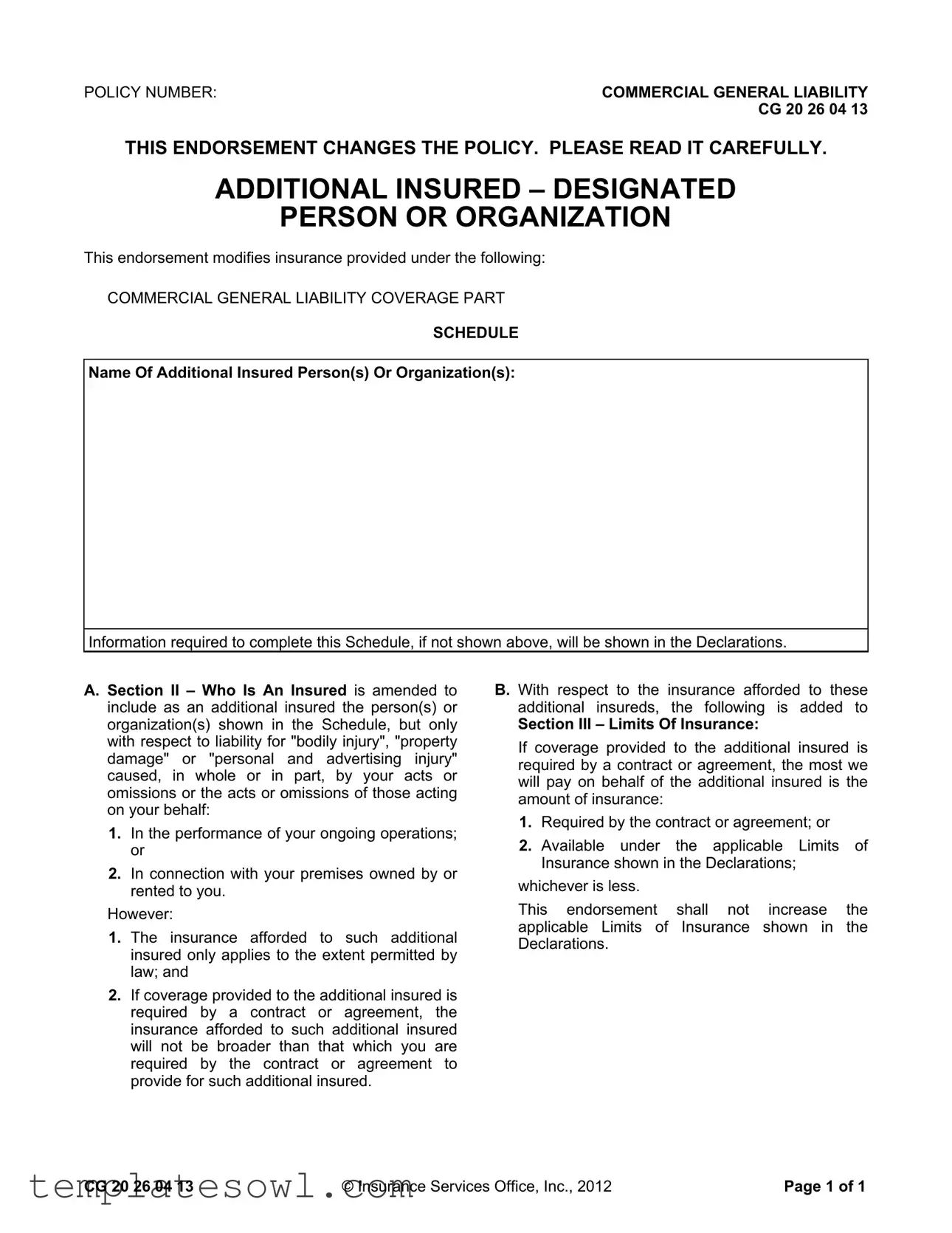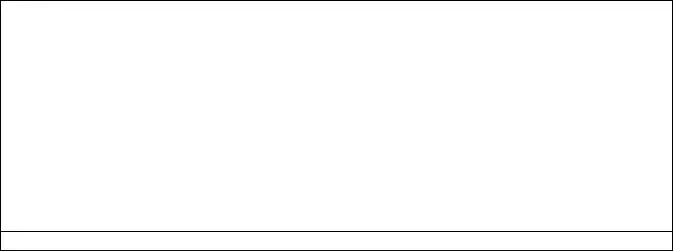What is the purpose of the CG 20 26 04 13 form?
The CG 20 26 04 13 form serves as an endorsement to the Commercial General Liability (CGL) insurance policy. Its primary purpose is to add specific individuals or organizations as additional insured parties. This coverage applies to incidents involving bodily injury, property damage, or personal and advertising injury that occur due to the actions or omissions of the named insured or their representatives. It is crucial to note that the endorsement is limited to certain conditions related to the insured's operations and properties.
Who qualifies as an additional insured under this form?
Additional insured individuals or organizations are those specified in the Schedule of the form. They are typically parties that require insurance coverage for liabilities associated with the named insured’s operations or premises. It is important for policyholders to ensure that anyone they want to include is clearly listed in this Schedule, as coverage can only extend to those explicitly named.
What limitations come with the coverage provided to additional insureds?
The coverage provided to additional insureds is subject to certain limitations. First, it only applies to situations permitted by law. Additionally, if the policy is being amended to fulfill a contractual obligation, the coverage cannot exceed what the primary insured is required to provide under that contract. This means that if a contract specifies lesser coverage, that limitation will apply.
How does the limit of insurance work for additional insureds?
When it comes to limits, the amount available to additional insureds is determined by either the contractual requirement or the limits outlined in the original policy, whichever is lower. This ensures that while additional insureds receive necessary coverage, the insured party doesn’t face unexpected financial exposure. Notably, the endorsement does not change the applicable limits of insurance found in the Declarations of the policy.
Is there any way the endorsement could result in increased coverage limits?
No, the CG 20 26 04 13 endorsement does not provide for increased coverage limits. The maximum amount payable remains the same as described in the original policy. It is vital for policyholders to understand this aspect, as it ensures that while additional insured coverage is granted, it doesn't expand the overall policy limits. Maintaining awareness of these limits is essential to avoid unintended risks.

